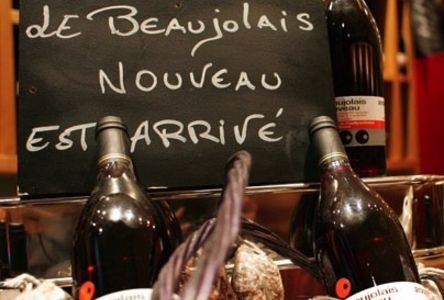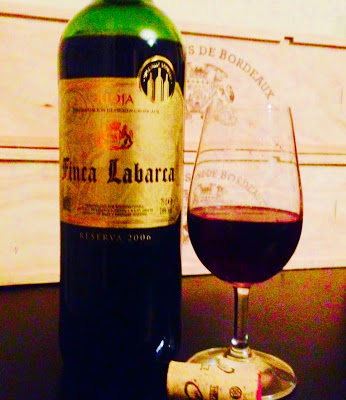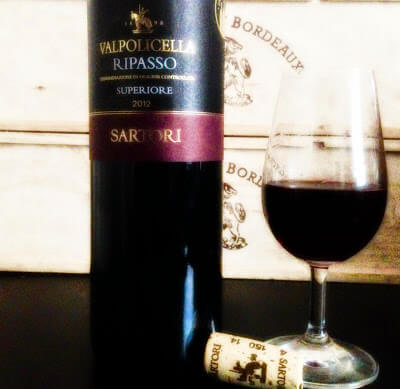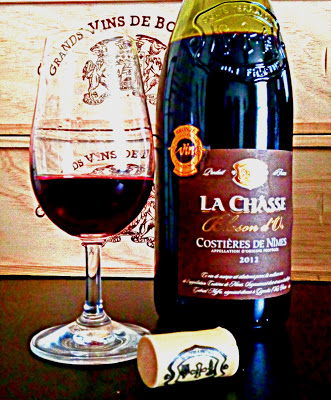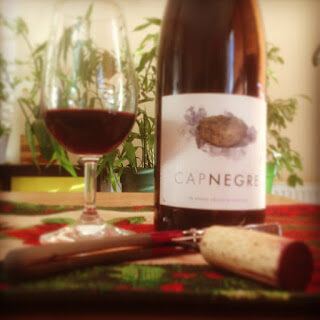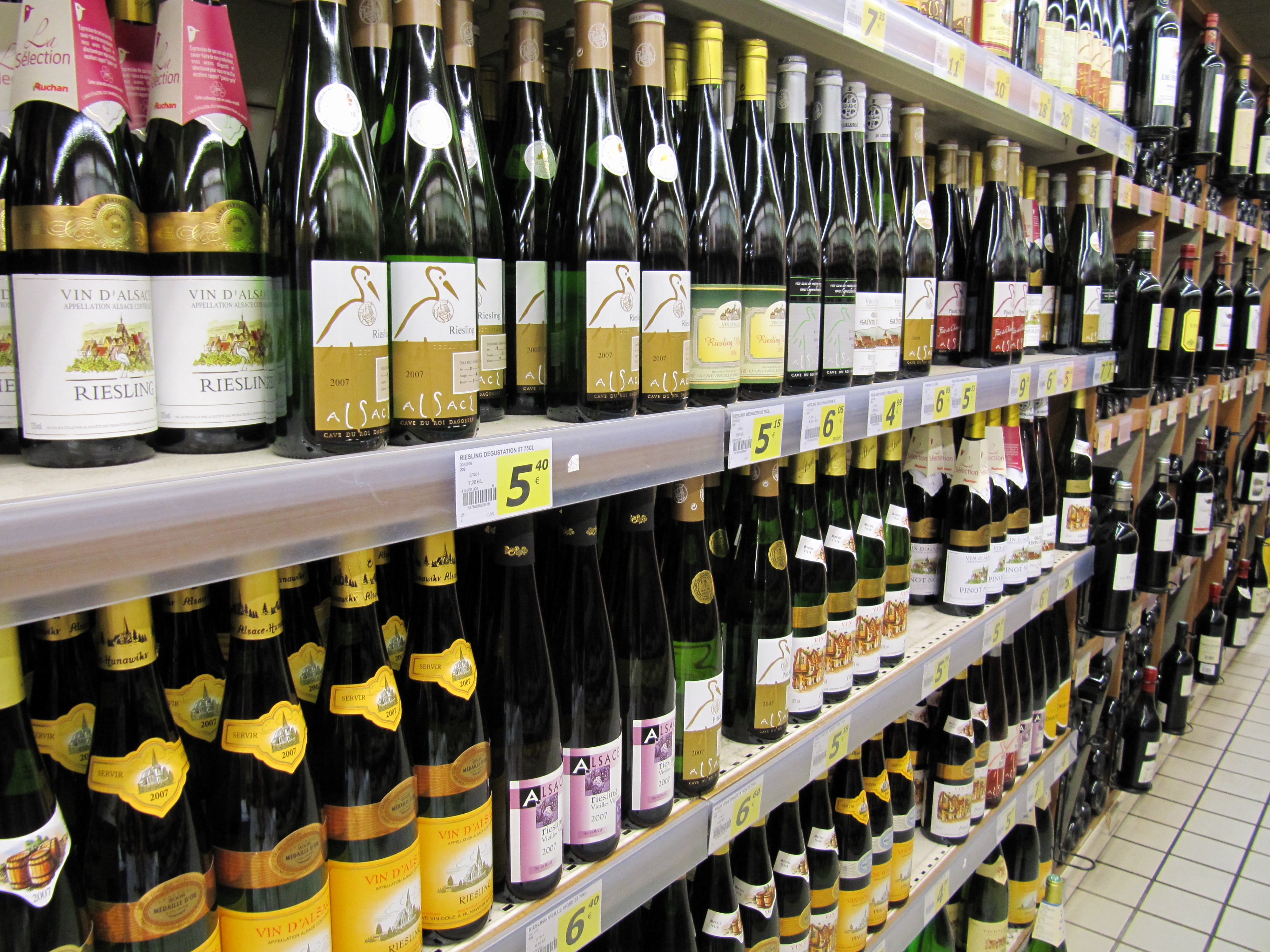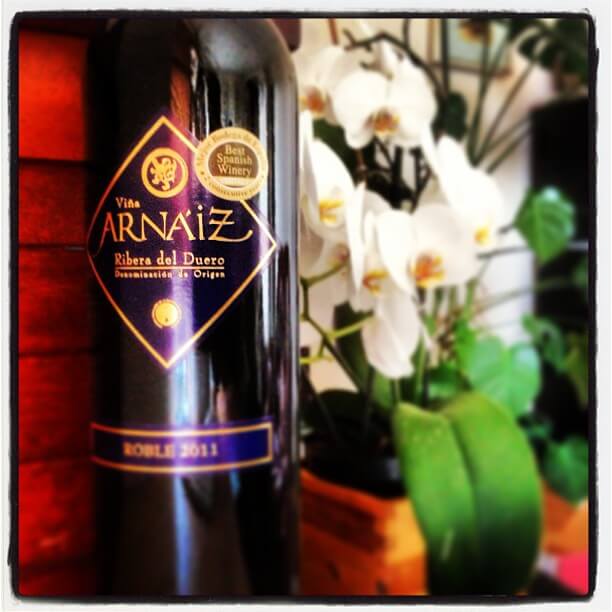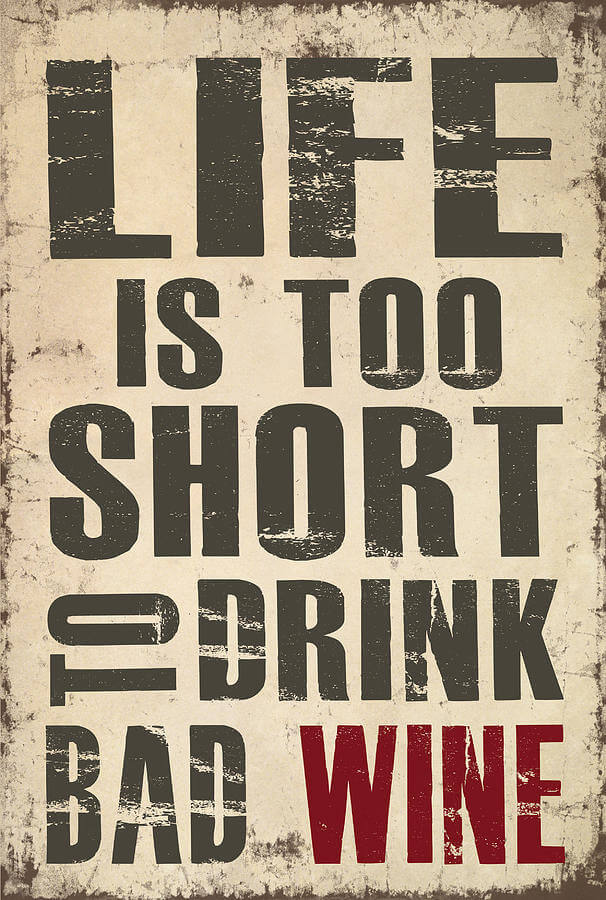| Grape Name |
|
Description |
| Aglianico |
 |
Southern Italy’s most prominent red grape, it produces the famous Taurasi wine. Full of fruity, smoky complexities – tannic when young, harmonious, dense and oaky. |
| Albariño |
 |
Spanish white varietal producing a crisp, fruity wine similar to Riesling. |
| Aligote |
 |
Used in the Burgundy region of France. The Aligote is generally considered unimpressive, but it is still used to make a few wines. |
| Auxerrois |
 |
The local French name for the Malbec (or Côt) red wine grape variety grown in the Cahors region of France. |
| Baga |
 |
Predominant in the Bairrada region of Portugal, where this grape accounts for 80 percent of all grapes grown, it is quite dependable and shows promise, has yet to establish truly fine varietal characteristics. |
| Barbera |
 |
A prolific Italian variety grown in Piedmont, making light, fresh, fruity wines that are gradually growing in quality and popularity. |
| Cabernet Franc |
 |
One of the major black grape varieties worldwide. It is mainly blended with Cabernet Sauvignon and Merlot in the Bordeaux style, but can also made varietals. It is lighter than Cabernet Sauvignon, making a bright pale wine that lends finesse to blends with more robust grapes. |
| Cabernet Sauvignon |
 |
The primary grape used in Bordeaux and Meritage red wines. It provides elegance and structure. Flavors are of blackcurrants and cedar, but in other areas may include green peppers and mint. |
| Carmenère |
 |
See also Grand Vidure. Primary grape of Chile producing bold red wines, it is sometimes mistaken for Merlot. |
| Chardonnay |
 |
This classic variety is responsible for producing the greatest white Burgundies and is one of the three major grape types used in the production of Champagne. Also known as Muscadet, Pinot blanc and Pinot chardonnay. |
| Chenin Blanc |
 |
A variety used in the Chenin Blanc region of France. Good acidity level, thin skin and a high natural sugar content, making it very suitable for either sparkling or sweet wines, although some dry wines, are made from it. |
| Cinsault |
 |
A prolific grape found mainly in southern Rhone and Languedoc-Roussillon vineyards, where it makes robust, well-coloured wines. Best results are obtained when it is blended, as at Chateauneuf-du-Pape, for example. |
| Colombard |
 |
A grape that produces thin and acidic wine ideal for the distillation of Armagnac and Cognac, but has adapted well to the hotter winelands of California and South Africa, where its high acidity is a positive attribute. |
| Cortese |
 |
The primary grape for Gavi wine, this grape ripens early and makes a neutral white wine. It is grown primarily in Piedmont, Italy. |
| Corvina |
 |
A prolific Italian variety where is it blended into the windes of Bardolino and Valpolicella. The grape’s thick skins contribute color and tannin. Has leathery, chocolaty, nutty-spicy, and herbal flavors and some cherry aromas. |
| Dolcetto |
 |
Well-known grape widely grown in Piedmont region of Italy. Has synonym name Nera Dolce, meaning “Sweet Black” in english. Has aroma flavors described as reminiscent of almond and liqorice. |
| Dornfelder |
 |
German hybrid developed in 1956 which produces a dark-colored, soft, chocolatey red wine. |
| Ehrenfelser |
 |
Created by crossing the Johannisberg Riesling grape and a Sylvaner grape clone, Ehrenfelser is extremely frost resistant. The wine it creates tastes a great deal like Riesling wine. Ehrenfelser is grown primarily in Canada. |
| Fiano |
 |
Native to southern Italy, this grape produces a white wine with pear and spice flavors. Also tropical flavors, citrus and a nutty edge. |
| Gamay |
 |
This is the only grape in red Beaujolais wine, in France. At an early age, flavors have been described as bananas and bubble gum, and evolve into spice, mint, hazelnuts and walnuts. |
| Gewürztraminer |
 |
Means “spice” in German. It has a slight grapefruit, ground pepper, floral, and nutty taste. In Alsace it is drier than the German versions and usually medium-bodied. Also grown in Italy, California, Canada, and Australia. |
| Grand Vidure |
 |
Also known as the Carmenere grape, this low-yielding grape was best known for its use in Medoc wines. Cuttings were taken to Chile in the mid-nineteenth century. |
| Grenache (noir) |
 |
Common in the Rhone and Spain (as Garnacha), it is a deeply colored, fruity red, but a bit on the rustic side. Usually blended and primarily found in the wines of the Southern Rhone. |
| Grenache Blanc |
 |
The white Grenache variant that is widely planted in France and Spain. It is an ancient Spanish variety that has the potential to produce a good-quality, full-bodied wine. |
| Johannisberg Riesling |
 |
A synonym often used to distinguish a wine made from the true Riesling grape. It is said to be at its best in the Rheingau vineyards of Johannisberg thus the name. |
| Lambrusco |
 |
An Italian variety, famous for its production of the medium-sweet, red, frothy wine of the same name in the Emilia-Romagna area. |
| Lemberger |
 |
Aliases for Blaufrankish and Limberger. Lemberger is a popular Austrian wine that is also planted heavily in Washington state. |
| Malbec |
 |
A grape traditionally used in Boreaux blends to provide color and tannin. Also grown in the Loire, Cahors and Mediterranean regions, and is THE red grape in Mendoza. Black cherry, tobacco and chocolate flavors. |
| Malvasia |
 |
Most widely used as Malvasia Bianca. It can produce wines in a wide variety of styles ranging from very dry to very sweet. In any form, the wines have aromas of pears and spice with fresh fruity flavors. |
| Marsanne |
 |
A grape that makes fat, rich, full wines and one of the two major varieties used to produce the rare white wines of Hermitage and Chateauneuf-du-Pape. |
| Mauzac |
 |
A late-ripening grape with good natural acidity, grown in southwest France. Flexible in the styles of wine it produces, it is particularly suitable for sparkling wine. |
| Meritage |
 |
Not a grape, but a California-style blend of predominantly Cabernet Sauvignon, Merlot and Cabernet Franc (<10%). It has qualities and similarities that often rival its French Bordeaux red wine cousin. |
| Merlot |
 |
This is an early ripening grape, with gentle flavors of plum, cherry, and sometimes toffee. In some areas of France, it can take over as the main grape in the Bordeaux blend. |
| Merlot Blanc |
 |
A variety cultivated on a surprisingly large scale on the right-bank of the Gironde, yet said to be unrelated to the more famous black Merlot variety. |
| Mission |
 |
One of the earliest grapes planted by Spanish settlers in South and Central America and California. |
| Monastrell |
 |
Spanish version of Mourvédre grape. |
| Mourvédre |
 |
An excellent-quality grape variety that has been used in Chateauneuf-du-Pape blends in recent years. It is grown under the name of Monastrell in Spain and Mataro in Australia and a popular grape in Chile. |
| Muscadelle |
 |
Part of the confusing-Musc-series, Muscadelle is one of the white grapes grown in Bordeaux. Not related to the Muscat grape, but does have a grapey-tasting flavor. This grape is most well known for its use in the Tokay. |
| Muscadine |
 |
Grown almost exclusively in the southeastern U.S. and in Mexico, the Muscadine is a large grape with a thick skin. It is very hearty, very aromatic, and grows in regions that may be inhospitable to other grapes. |
| Muscat |
 |
A family name for numerous related varieties, sub-varieties and localized clones of the same variety, all of which have a distinctive musky aroma and a pronounced grapey flavour. The wines produced range from dry to sweet, still to sparkling and fortified. |
| Muscat |
 |
This is a very grapey-tasting grape that doesn’t ripen easily. There are various varieties of Muscat, such as Muscat blanc, Moscato (Italy), which is used for the sparkling Asti Spumanti wines, and Muscadel. |
| Müller Thurgau |
 |
The grape most widely planted in Germany, Müller-Thurgau comes as a mix of Riesling and Sylvaner. This is also grown in Austria, New Zealand and the northwest section of the U.S. It has a floral aroma. |
| Nebbiolo |
 |
This is a late ripening grape that’s known for being tannic, pruny, tarry and chocolaty. It is notoriously difficult to grow, but adds complexity and ageability to wines. Also known as Spanna. |
| Pais |
 |
See Mission grape. |
| Palomino |
 |
Native of Spain and used in the production of fine sherries. It is a variety that is used especially for the dry light Fino sherries. |
| Petit Verdot |
 |
A grape used in Bordeaux because it is a late-ripener, bringing acidity to the overall balance of a wine. Not seen as a unique wine varietal, but can produce a characterful, long-lived and tannic wine when ripe. |
| Petite Sirah |
 |
Often confused as a relative of the Syrah grape, but really a different varietal. It produces intensely flavored wines with a lot of tannin. |
| Pinot Blanc |
 |
A variety at its best in Alsace where it is most successful, producing fruity, well-balanced wines with good grip and alcohol content. Also known under the more common name of chenin blanc in central France. |
| Pinot Gris |
 |
This is a clone of Pinot Noir, grown in France, Germany, Austria, Italy, and along the west coast of the US. It’s also known as Rulander or Grauer Burgunder. It can be used to create both fine whites and roses’. |
| Pinot Meunier |
 |
An important variety in Champagne, where, vinified white, it gives more up-front appeal of fruit than the Pinot noir when young. It is essential for early-drinking Champagnes. Now showing up as a single varietal wine. |
| Pinot Noir |
 |
Used to produce Burgundy wine and makes wines which are moderately fruity with noticeable red-berry (stawberry, cherry, raspberry) floral, and spicy aromas. Usually medium-bodied, dry, and light to moderately tannic. Without skins, they are used in Champagne. |
| Pinotage |
 |
Developed in the early 1900’s and used primarily by South Africa, Pinotage is a mix between pinot noir and cinsaut. The grape makes a wine that is hearty, with a fruity and spice taste. |
| Portugieser |
 |
The widest-planted black grape variety in Germany, originating from the Danube district of Austria. As it makes very ordinary and extremely light red wine, it is often used in bad years to blend with the too acidic white wines. |
| Primitivo |
 |
An Italian variety, grown in Apulia, where it produces rich wines, sometimes sweet or fortified. Some think it is the same variety as Zinfandel. |
| Riesling |
 |
Most fine German wines from the Moselle and Rhine areas are made from Riesling, which may have floral, fruity (citrus, peach, apricot, pineapple) and honey aromas. Light to medium-bodied. |
| Rondinella |
 |
An Italian variety, secondary to the Corvina grape in terms of area planted, used for the production of Bardolino and Valpolicella. |
| Roussanne |
 |
One of the two major varieties used to produce the rare white wines of Hermitage and Chateauneuf-du-Pape in France’s Rhone Valley. This grape makes the finer, more delicate wines, while those made from the Marsanne are fatter and richer. |
| Sangiovese |
 |
The principal variety used in Chianti, it is grown in Italy’s Tuscany region. In a pure varietal form it has floral, herbal and cherry aromas, and now popular in California. |
| Sauvignon Blanc |
 |
This grape is grown primarily in California and France. It has a grassy flavor and makes a crisp, light wine. The same grape is used in Fumé Blanc wine, which is its “drier” version. |
| Scheurebe |
 |
This is a mix between Sylvaner and Johannisberg Riesling. It is mostly planted in Germany and is used for aromatic white wines. |
| Semillon |
 |
This thin-skinned, grape ripens early and is used mostly in Bordeaux, France. It has a grassy, “figgy” flavor. It is also grown and showing promise in Australia and California, and is often blended with Sauvignon Blanc. |
| Shiraz |
 |
Australian grape varietal. See Syrah |
| Siegerrebe |
 |
A German Madeleine Angevine x Gewurztraminer cross. Can make a very good dry/off-dry dinner wine, but best as a late harvest dessert wine. |
| Steen |
 |
A synonym for the Chenin blanc used in South Africa. Not to be mistaken by “Stein” which is also used in South Africa, but rather a semi-sweet style of white wine. Many “Stein” blends contain a large percentage of of Steen. |
| Sylvaner |
 |
Originally from Austria, this variety is widely planted throughout Central Europe. It is prolific, early maturing and yields the dry wines of Franken and Alsace. It is also widely believed to be the Zierfandler of Austria. |
| Syrah |
 |
The name is derived from Shiraz, the capital of Fars, a province of Iran. In Hermitage, in the northern Rhone, the grape makes big, rich tannic wines with a good deal of fruit. Known as Shiraz in Australia. |
| Tempranillo |
 |
The most important variety in Rioja, where it is traditional to blend the grapes. Also grown in Argentina. Many pure Tempranillo wines though, are of excellent quality, producing long-lived wines of some finesse and complexity. |
| Tinta Cao |
 |
One of the best Port grapes. |
| Torrontés |
 |
Argentina’s famous white grape, it produces spicy, dry, refreshing whites. It started life in Galicia, northwest Spain, where it is still found in the white wines of Ribeiro. |
| Touriga Nacional |
 |
The finest Port grape in the entire Couro. The wine is fantastically rich and tannic, with masses of fruit, and is capable of great longevity and complexity. |
| Trollinger |
 |
A variety mainly restricted to the Wurttemberg region of Germany. It produces fresh and fruity red wine. |
| Verdicchio |
 |
Maritime aromas, crisp fruit and almond flavored finish characterize this Italian grape. It produces a full-bouquet, fruit-packed wine that sometimes requires a bit of oak to add heft. |
| Vermentino |
 |
Sweet without being fat, this Spanish varietal is widely planted in Italy and produces a fresh and fruity summer wine. Has notes of apple, pear and herbs but can be borderline meaty. |
| Vernaccia |
 |
One of Italy’s native grapes, it has been around for centuries and is somewhat simple and lightly aromatic. It provides light citrus and apples flavors and is often blended with chardonnay to give it structure. |
| Viognier |
 |
This varietal originated in Condrieu, on the northern Rhone. It is predominately found in the Rhone Valley and now California. Noted for spice, floral, citrus, aprict, apple, and peach flavors. |
| Vranac |
 |
A grape indigenous to Yugoslavia, where it makes dark-colored, full-bodied, characterful wines. |
| Zinfandel |
 |
Regarded in California as a native grape, but may have its heritage as the Primativo grape of Italy. Used for the origional “blush” wines but usually make jammy, spicy wines. |
